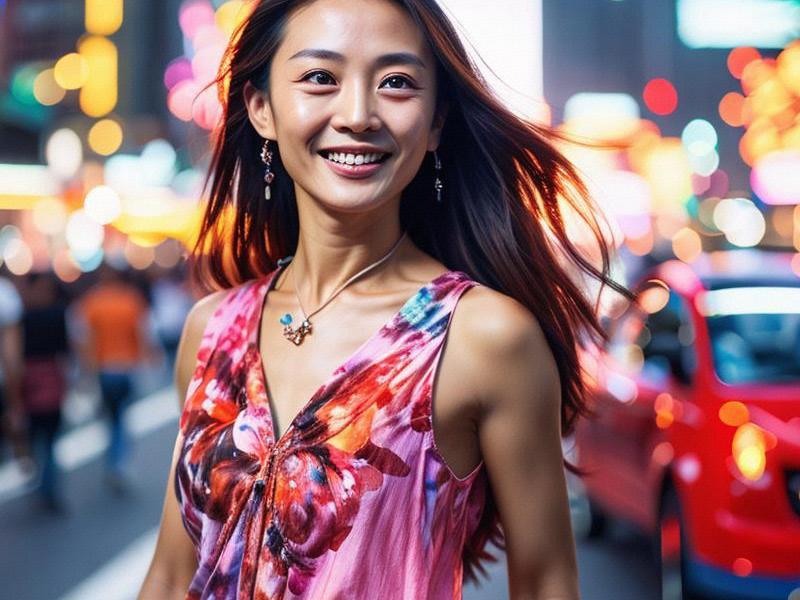Shanghai, a city that has long been a symbol of China's rapid modernization, is a place where the old and the new coexist in a harmonious symphony. At the heart of this metropolis lies the Huangpu River, a waterway that not only serves as a vital transportation route but also as a living, breathing testament to the city's evolution. This article delves into the unique beauty of Shanghai, exploring how modernity intersects with style along the ban

Nestled in the eastern part of China, Shanghai stands as a beacon of economic prosperity and cultural fusion. The city's skyline, a mesmerizing array of towering skyscrapers and historic buildings, is a visual representation of its dual identity: a bustling economic hub and a repository of cultural heritage. The Huangpu River, flowing through the heart of Shanghai, serves as a natural divider between the city's historic Puxi district and its modern Pudong area, each offering a distinct facet of Shanghai's charm.
The Huangpu River is more than just a geographical feature; it is a lifeline of Shanghai,见证了上海的生命线(shēnghuó xiànxiàn)(the lifeline of Shanghai), connecting the city to the vast network of China's waterways. It has been a witness to the city's transformation from a modest fishing village to a global metropolis. The riverbanks are lined with a mix of ancient temples, colonial-era buildings, and cutting-edge skyscrapers, creating a unique urban landscape that is both enchanting and inspiring.
Puxi, the western bank of the Huangpu River, is where one can find the remnants of Shanghai's colonial past. The Bund, a famous waterfront area, is a showcase of Art Deco architecture from the early 20th century. These buildings, with their intricate designs and historical significance, stand as a testament to the city's colonial history. The Bund is not just a visual treat but also a cultural hotspot, hosting numerous exhibitions, concerts, and events throughout the year.
上海龙凤419官网 In stark contrast, Pudong, the eastern bank, is a symbol of Shanghai's modernity and ambition. The Lujiazui Financial District, home to some of the world's tallest buildings, including the iconic Oriental Pearl Tower and the Shanghai Tower, is a testament to the city's economic prowess. The Pudong area is also home to the Jin Mao Tower, the Shanghai World Financial Center, and the upcoming Shanghai Tower, which, at 632 meters, will be the tallest building in China upon its completion.
The juxtaposition of these two districts along the Huangpu River creates a unique urban environment that is both dynamic and harmonious. The river itself serves as a connector, a unifying element that ties together the city's past and present. It is a place where one can witness the convergence of history and modernity, tradition and innovation.
One of the most enchanting aspects of Shanghai's beauty is its ability to blend the old with the new. The Yu Garden, a classical Chinese garden located in the heart of the city, is a perfect example of this fusion. This 400-year-old garden, with its meticulously designed rockeries, ponds, and pavilions, offers a glimpse into the traditional Chinese aesthetic. It stands in stark contrast to the futuristic skyline of Pudong, yet the two are separated by mere kilometers, highlighting the city's unique ability to harmonize its rich cultural heritage with its modern aspirations.
上海贵族宝贝sh1314
The Huangpu River is also a major draw for tourists from around the world. The river cruises offer a unique perspective of the city, allowing visitors to admire the stunning skyline from the water. These cruises often include stops at landmarks such as the Nanjing Road pedestrian street, the Shanghai Museum, and the iconic Oriental Pearl Tower. The cruises provide an opportunity to experience the city's vibrant culture, delicious cuisine, and warm hospitality.
Shanghai's beauty is not just confined to its architecture and urban landscape; it is also reflected in its lifestyle and cultural scene. The city is known for its vibrant nightlife, with numerous bars, clubs, and restaurants offering a wide range of entertainment options. The Shanghai International Film Festival, one of the oldest and most prestigious film festivals in Asia, attracts filmmakers and cinephiles from around the world, showcasing the city's commitment to the arts.
上海品茶工作室 The city's culinary scene is another aspect that contributes to its allure. Shanghai cuisine, known for its sweet and savory flavors, is a delight for food lovers. From traditional dishes such as Xiaolongbao (soup dumplings) and Shengjianbao (pan-fried dumplings) to modern fusion cuisine, Shanghai offers a culinary experience that is as diverse as the city itself.
Shanghai's beauty is also evident in its commitment to sustainability and green initiatives. The city has been at the forefront of environmental conservation efforts, with numerous parks, green spaces, and eco-friendly projects. The Shanghai Green Belt, a large urban forest along the Huangpu River, is a testament to the city's dedication to creating a sustainable future.
In conclusion, Shanghai is a city that embodies the perfect harmony of modernity and style. The Huangpu River, with its rich history and stunning views, serves as a unifying element that ties together the city's diverse elements. From the historic Bund to the futuristic skyline of Pudong, from the classical beauty of Yu Garden to the vibrant lifestyle of the city, Shanghai offers a unique and captivating experience that is truly one of a kind.
The city's ability to blend its rich cultural heritage with its modern aspirations is a testament to its resilience and adaptability. As Shanghai continues to grow and evolve, it remains a beacon of hope and inspiration for the world, a city where the past and the present coexist in perfect harmony, creating a beauty that is both timeless and ever-changing.